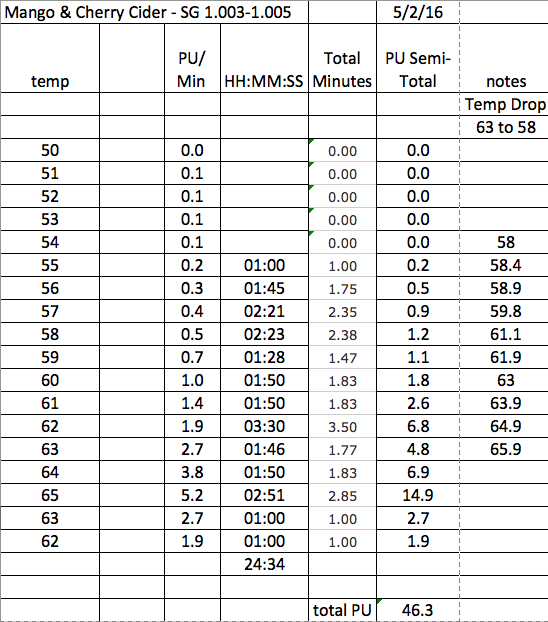BrewinSoldier
Well-Known Member
- Joined
- Jul 13, 2015
- Messages
- 481
- Reaction score
- 53
Hey guys! I just started dabbling in cider making again. To date, I have only done two batches. The first one was just a one gallon jug of TreeTop AJ from Costco that I emptied some out of, added some sugar, and pitched S-04 yeast. It came out OK but nothing like store bought ciders (such as Angry orchard,etc).
A few months ago, now that I have all this fancy temp controlled equipment, I decided to try out the Brewers Best Cider house kit. It came out OK but I definitely did not like the artificial sugar after taste, probably from the fake sugar package it comes with. I only added half of the packet too.
Now I'm back to trying it out with some recipes I found on here. I do have some questions though.
Right now I have a 5 gallon batch in the fermenter that I started 7 days ago. I added 4 gallons of martinlli's gold label Apple juice, and one gallon of the Tree top 3 Apple blend Apple juice. Oxygenated and pitched a packet of US-05. OG was 1.054 and it's currently at 1.014~.
I have read and read through these forums about pasteurizing after bottling. I keg all my beer and plan to do the same with the cider. I am going to sweeten this batch per the recipe with 1# if local honey and 1 bottle of peach nectar and then force carb in the keg as per usual. I do like to bottle some after its done carbonating and give them away, or take them places. I am worried about what would happen if someone let it get warm. Does cold crashing before kegging negate me having to pasturize the bottles if I am counter filling from the carbonated keg? The other option is I just ordered a plate filter from morebeer with the 1 micron polishing filters. If I ran it through this on the way from the conical fermenter(after cold crashing a few days and dumping the trub) and into the keg, would that filter out any remaining yeast so that I could fill up a few bottles from the keg here and there without worries?
Thanks for any input.
A few months ago, now that I have all this fancy temp controlled equipment, I decided to try out the Brewers Best Cider house kit. It came out OK but I definitely did not like the artificial sugar after taste, probably from the fake sugar package it comes with. I only added half of the packet too.
Now I'm back to trying it out with some recipes I found on here. I do have some questions though.
Right now I have a 5 gallon batch in the fermenter that I started 7 days ago. I added 4 gallons of martinlli's gold label Apple juice, and one gallon of the Tree top 3 Apple blend Apple juice. Oxygenated and pitched a packet of US-05. OG was 1.054 and it's currently at 1.014~.
I have read and read through these forums about pasteurizing after bottling. I keg all my beer and plan to do the same with the cider. I am going to sweeten this batch per the recipe with 1# if local honey and 1 bottle of peach nectar and then force carb in the keg as per usual. I do like to bottle some after its done carbonating and give them away, or take them places. I am worried about what would happen if someone let it get warm. Does cold crashing before kegging negate me having to pasturize the bottles if I am counter filling from the carbonated keg? The other option is I just ordered a plate filter from morebeer with the 1 micron polishing filters. If I ran it through this on the way from the conical fermenter(after cold crashing a few days and dumping the trub) and into the keg, would that filter out any remaining yeast so that I could fill up a few bottles from the keg here and there without worries?
Thanks for any input.

















![Craft A Brew - Safale S-04 Dry Yeast - Fermentis - English Ale Dry Yeast - For English and American Ales and Hard Apple Ciders - Ingredients for Home Brewing - Beer Making Supplies - [1 Pack]](https://m.media-amazon.com/images/I/41fVGNh6JfL._SL500_.jpg)







































